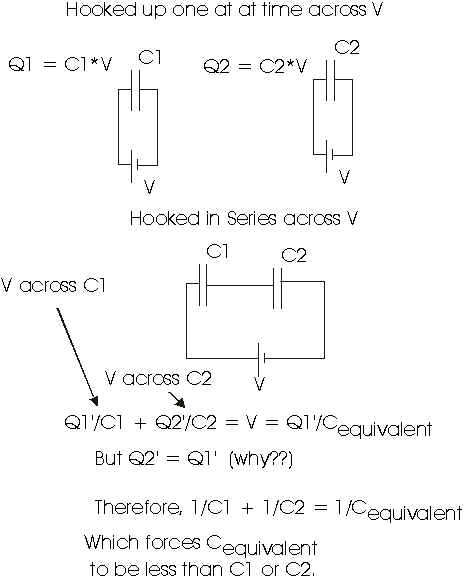
If two capacitors are put in series, why is the total or equivalent capacitance less than that of one of the capacitors??
The simple answer is that for a given battery voltage V, if you put C1 or C2 across V, they charge up to Q’s which are as large as they are going to get (Q1=C1*V; Q2 = C2*V). When you put them in series, the potential across each capacitor is LESS THAN V; thus, they do not get as much charge. Since when in series, Q1’ = Q2’ (see below), this Q1’ (=Q2’) will be less than Q1 or Q2. But Cequivalent = Q1’/V. Therefore, Cequivalent must be smaller than C1 or C2.
Now here is the math that proves it:

Comments on READING QUIZ:
Reading quiz -- Comments:
We showed that to get the max power dissipated in the resistor R from a battery of emf = V and internal resistance r, that we have P = I2 Req where Req = R + r. If we let x = R/r, then P will be proportional to x/(1+x)2 . This will min-max at x = 1. (Take the derivative and set it = 0).
We can use Mathematica to plot this and see that it has a max at x = 1 (which is R= r).


which can be seen to be a MAX (not a minimum) and the MAX occurs at x = 1 (R=r).
NOTE that at x = 0 (i.e., R=0) the battery is shorted out -- you are drawing the maximum current out of the battery (Imax = V/r), BUT the power dissipated by R is zero for the simple reason the I2 R = 0 since R=0. All of the voltage is dropped across the internal resistance r.
Normally you do not want to short out a battery -- A big battery can deliver a hugh current; most batteries would be damaged permanently.
Cheers.